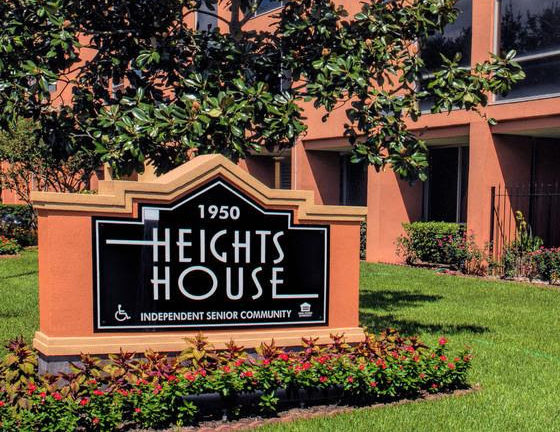www.townofindianlake.com viagra discount sales

ePIPE Plumbing Restoration Interview:
Charlie: Now, right now TDT is in the midst of a huge pipe restoration project. A couple of them are two HUD senior living facilities, Houston House, with 151 units, and Woodland Christian Towers with 126. Gary, a house is one thing, but how on earth do you even get started working on 177 practically at the same time?
Gary: I guess I would have to say that we work with the property manager, owners, representatives, architects, engineers, whoever is potentially involved. With that, we work out a schedule with ownership and have town hall meetings with the people who live there to kind of explain the process, the timing, so that we can let people know in advance when we’re going to be into their units, and when we’ll be restoring certain pipes.
Because these projects often may take several months, if not a year to complete. So you may not see a particular owner or tenant, you know, for seven months or eight months. So we develop a schedule well in advance that helps us understand who will be affected and who will be in their property, business as usual as if nothing’s going on around them. And that’s very common.
Charlie: How do you sequence something like that? Do you just go from one to the next to the next?
Gary: Most buildings that are residential environments like this are either plumbed horizontally. So if it’s a horizontal plumbing, you would maybe do the fifth floor and then or the sixth floor and you could section off or isolate pieces of that.
But more common on a vertical tower, we would go floors one through 10, but just a particular unit. So let’s say there’s 21 apartments on a floor, we might just do the number one apartment, but would do 101, 201, 301, each floor. It would just take all of those off of the system.
And then over a week or two, we would do a complete ePIPE plumbing restoration of those pipes and then we’d put it back into service and then we’d go to the number two units and we would take care of them.
So depending on how they were plumbed back 30 or 40 years ago or however old they are, we would then use the existing system as our guideline as to how we’re going to restore that property.
Charlie: This sounds like it’s a big part of this is detective work for you and figuring out how these buildings are put together.
Gary: Oh, you bet. So much time has to be spent up front so that we can really understand good work hours with the client. We also typically have no type of plans or diagrams. Often this stuff is lost in a flood or was sold three times beforehand and paperwork and information has gone.
So it would not be uncommon for us to generate a set of plans, really dive into the system and do some other upgrades while we’re at it. So that it’s easier to isolate different sections of pipe and that’s all a part of that process upfront that we have to do then.
Charlie: Now you’re coming in with your ePIPE system, right?
Gary: Yeah.
Charlie: So from a high level, how does that process work? How does ePIPE restore the pipe?
Gary: Well, ePIPE plumbing restoration is a patented coating process. I mean, coatings have been in pipes for probably hundreds of years. When you go way back, the coatings were different and today epoxy is the number one type of coating that is used, different types of epoxies. Whether you have a sewer line or a drain line or a water line.
For us what we would do is come in and isolate off sections of pipe. We dry the inside of the pipe, get the water out, get it nice and dry, and then we would sandblast the inside of the pipe. And by doing that we are cleaning the inside edges of the wall of the pipe down to new metal, getting all the rust, the corrosion, the calcium, oxidation, anything that is inside, we would blast out. And it also gives us a nice matte finish, a nice clean surface for adhesion of the epoxy resin.
Once it’s clean, we then can calculate out some measurements and calculate out volumes of liquid epoxy. It’s mixed in a machine and it’s injected and pushed through the lines using air. And once that epoxy’s in the pipe within a couple of hours, it’s dry and we could put water on right then if we wanted to.
And so there’s some preparation and cleaning and then the actual coating. We let it dry and then we come back and hook the water back up and turn everything back on to the unit.
Charlie: You access these pipes through the tips that are already there at the access points already. So does this mean that you’re not having to cut a lot of holes, or is it just like a residential project in that way?
Gary: Yeah, absolutely. So if you were to imagine what it takes when you have the dry wall covering everything in tubs and tub tiles. A building may take on average three years to re-pipe conventionally, and maybe triple the cost because of the cosmetic nightmare that you end up having to deal with cutting the drywall and removing old pipe, putting in new pipe. So you have a whole bunch of extra work that has to be done to re-pipe conventionally a property.
For us, those pipes stick out of the wall under the sinks, below the commode fixtures, on the tubs. They come into a valve that’s centrally located right there in the tub, and so we minimize the needed access if you were to have to re-pipe it. So we come in, take off the little supply tubes in the valves, and where the pipe is sticking out or we can touch it, that’s where we’re going to connect.
And so probably 95% or 97% of the restoration is done right where you can grab the pipe. There are some areas maybe up in the attic or first floor or wherever, that we would go through and grab the pipe off of the main line, or what have you. It gets a little more complicated than maybe this shows than I can get into here.
Charlie: But at a high level, you’re going in through access that without having to cut holes in the wall.
Gary: Absolutely. Residentially it’s the same thing. You know, we grab the water at the water heater, or we grab the water where it comes into the home and at each and every sink and what have you, and it’s quick, it’s easy, it’s painless.
It’d be very rare that we’d have to do very much cosmetic work at all in a project. Usually we’re in and out in a few days when it’s a residential. But again, in these commercial projects, you know, like the HUD towers, those are long-term projects, several months. Several months to a year is not uncommon.
Charlie: Well, with Heights House in particular, you have 100, you essentially have 151 residences you’re doing in sequence. What has been the reaction to this from the people you’ve already completed?
Gary: All kinds of recommendations and good stories, and thanks. The men on site, I mean, it’s just, it’s nice to hear those stories when people come in and say, hey, I was tired of seeing rusty water every time I turned on, or you know, my water pressure was poor or low, or I didn’t have maybe as much hot water as I would’ve liked.
And then through the process we’re able to eliminate those negatives, right? So then all of a sudden it’s like, wow, you know, I got hot water instantly. It’s so clean, it tastes better. My pressure’s great. I can get the soap out of my eyes and hair when I wash my hair, whatever. So it’s really nice.
Another big benefit that we have is we’re not having to come into a property with 20 employees, 20 souls to come in and attack. We’re able to come in and we work these projects with three or four, maybe five men and it’s so much easier when you’re not inside someone’s unit for eight hours a day, every day. 15 minutes here, 15 minutes there. It’s no noise, no dust. It’s quiet and things go into routine. It just goes like clockwork.
Get there in the morning. You know what’s nice about it, start about 8:30 or 9:00. Let people get awake, have their coffee, and then we typically are trying to get out of there by 4:00, 4:30 in the afternoon. So we just try not to intrude in these people’s lives and that makes a big, big difference and they appreciate it and the ownership appreciates it.
Charlie: So just as it’s not invasive to the building, it sounds like you’re not invasive to people’s lifestyles either.
Gary: No, we are not. It could not be more pleasant for the people who actually live there. Residential homes typically, even though the property maybe not have water on or maybe without water, but folks, it doesn’t seem to bother people.
It’s so minimal and the intrusiveness is so small that they just like what they see. They want to be a part of it. They want to talk about it. Homeowners are always just very complimentary and we appreciate it. We appreciate helping them and I think they’re glad we’re there to do that.
Charlie: A job well done and one of the things you mentioned in there is how their water tastes. And next time we get together, Gary, I’d like to talk about that, about what the pipes are adding to the water that maybe isn’t good for you. We’ll talk about that next time we get together. Gary, thanks so much for your time.
Gary: Thanks a bunch, Charlie. Appreciate it.
